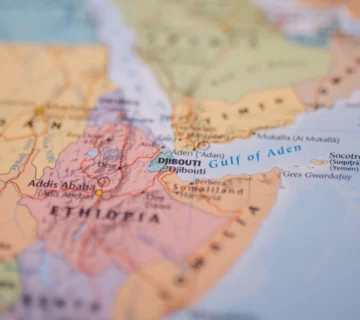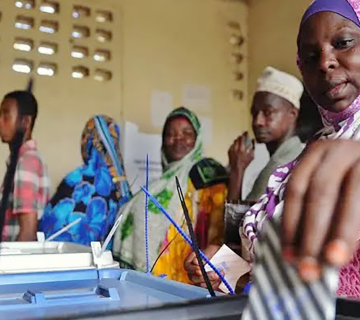Al Shabab intended to make a statement by attacking DusitD2, an upmarket property in Nairobi (Kenya), on January 15, 2019 – the day Kenya was marking the third anniversary of the El Adde attack, and at a time when the verdict in the case in which three individuals accused of abetting the Westgate Mall attack in 2013 is expected. Instead, both Kenya’s multi-agency teams, leaders, and ordinary Kenyans made the statement that carried the day, the statement that Kenya is prepared for, and is not ‘afraid of the big bad wolf.’
Abdiasis Abu Musal, the Somalia-based militant group’s military operations spokesman, communicated the group’s intention to attack a target in Nairobi, claiming responsibility for the ‘operation.’ The chosen theatre of their ‘operation’ has, among other facilities, a multi-floor parking stairwell, and at least six stand-alone buildings that house different kinds of businesses and/or offices run by multi-national corporations, local business owners, and governments. It is located off a relatively busy road, and near several embassies, and can accommodate more than 700 people at once. This choice speaks to the group’s hope that the attack would not only cause mass casualties, but also give it some ‘oxygen of publicity’ in both local and foreign media.
The ‘operation,’ however, seemed to have started failing before it even got underway. The terrorists probably did not expect that they would have to lob their explosives at three cars parked in the taxi bay outside DusitD2, instead of at many more cars in the parking stairwell, for instance, which is probably what they would have preferred. The resulting explosions and flames signalled, possibly before the intended time, that something was amiss. They also did not expect that security officers at the nearby Australian High Commission would react to the explosion and flames quickly, or engage them. The explosions, flames, and sounds of repeated gunfire caught the attention of both citizens and (other) security officers, and they reacted.
As the realization that DusitD2 may not be as exposed to the threat the four armed attackers thought it would be sunk, Kenya’s multi-agency teams of first responders, who based on their actions, were prepared for such an eventuality, begun to arrive at the scene. They secured DusitD2, and started evacuating the scores of individuals who had reacted to the unfolding event by hiding in different places in the compound. Aware that “terrorists,” as Brian Jenkins, a scholar, observed, also “like to see a lot of people watching, not a lot of people dead,” which paralyzes citizens, security leaders stated their position regarding media coverage of the attack, and discouraged citizens from sharing unverified information that could jeopardize security operations. The message on social media asking citizens stuck in DusitD2 to call ‘Anthony Kaleve,’ the ‘incident commander’ was countered by an alternative message warning the public that they should ignore Kaleve, because he is in fact not a security officer, and contact the head of the Flying Squad at the Directorate of Criminal Investigations instead.
Managing Fear, Building Resilience
As expected, the attack at DusitD2 heightened perceptions of terrorist risk in Kenya – renewing citizens’ interest in intelligence gathering through CCTVs and Nyumba Kumi; Kenyan leaders did not disappoint. They emerged in a seemingly organized, and coordinated manner, and within reasonable margins of the ‘golden hour.’ And, as they did, they spoke, clearly – without contradicting each other – to the unfolding events. They offered information, encouragement, advice, praise, and appreciation, and reacted to propaganda directly, and speedily.
President Uhuru Kenyatta, Kenya’s armed forces’ Commander-in-Chief, confirmed the incident had taken place, and that the attackers have been eliminated. Speaking from State House, he acknowledged that some individuals had died, and that others had been injured, and many survivors evacuated. He comforted the grieving families, and those nursing injuries. He commended citizens, security officers, and humanitarians for their responses. He also highlighted Kenya’s values of peaceful co-existence and respect for the law. He concluded by reassuring Kenyans that security officers are “determined to secure our country,” and that no effort will be spared in bringing the “owners, facilitators, and sympathizers” who funded, planned, and executed “this heinous act” to book.
Deputy President, William Ruto, Ph.D., visited the injured at various hospitals, and assured them that they would not suffer alone. He lauded the helpful and caring spirit of the Kenyan people, particularly in times of adversity.
Opposition leader, Raila Odinga, speaking from Capitol Hill, and from the vicinity of DusitD2 praised “the work done by security forces” saying their actions – seeing “what was intended” had helped to “save many lives.” He said Kenyans are united against terrorism, and appreciate the “solidarity of friendly countries with Kenya.” He termed the attackers “animals” for their responsibility in “killing fellow human beings” willingly.
Interior and Coordination of National Government Cabinet Secretary, Fred Matiangi, Ph.D., also speaking in the vicinity of DusitD2, said he had “never been so proud of our security forces” whom he praised for reacting “well, swiftly, and precisely.” He comforted bereaved families, and the injured receiving medical attention at hospitals. He assured Kenyans the country is safe, and that “we are ready to defend” it as well as “our way of life.”
Inspector of Police, Joseph Boinnet, speaking from Jogoo House, emphasized the importance of keeping away from the crime scene that DusitD2 has become, and of refraining from “speculative reporting”. He offered updates on the number of survivors and victims, and confirmed the death of the attackers, and several arrests of suspects. He thanked the public for their patience and cooperation, and friends of Kenya for their support. He also appreciated the efforts of the multi-agency security and emergency response teams for “support and job well done.”
Kenya Red Cross Secretary General, Abbas Gullet, noted that “Kenya is a learning nation” that “has come light years in managing crises of this nature. He also showed his appreciation for the way the multi-agency operation involving teams of both security officers, humanitarians, and citizens that saved lives.
These leaders’ rhetoric helped citizens to manage fear, and increased their capacity (of citizens) to cope with the aftermath of the attack better. They also emphasized Kenya’s ‘cultural script’ that the Kenyan spirit is alive and remains resilient in the face of terror. Further, they encouraged citizens to return to work and resume the duty of developing Kenya.
Staying Alert
Citizens complemented the efforts of their leaders. They responded to calls to donate blood, shared encouraging messages, and rallied together to put mute voices – including githeri media and a potentially offensive piece published in the New York Times that attempted to drive a wage between Kenyans, and between Kenya and other countries, by painting the Kenyan nation in bad light.
To ensure that Kenya does not become ‘afraid of the big bad wolf’ in the future, the citizens, leaders, and the multi-agency teams should continue working together to build on the successes witnessed in the handling of the DusitD2 terror incident.
Roselyne Omondi is the Associate Director, Research, at the HORN Institute



